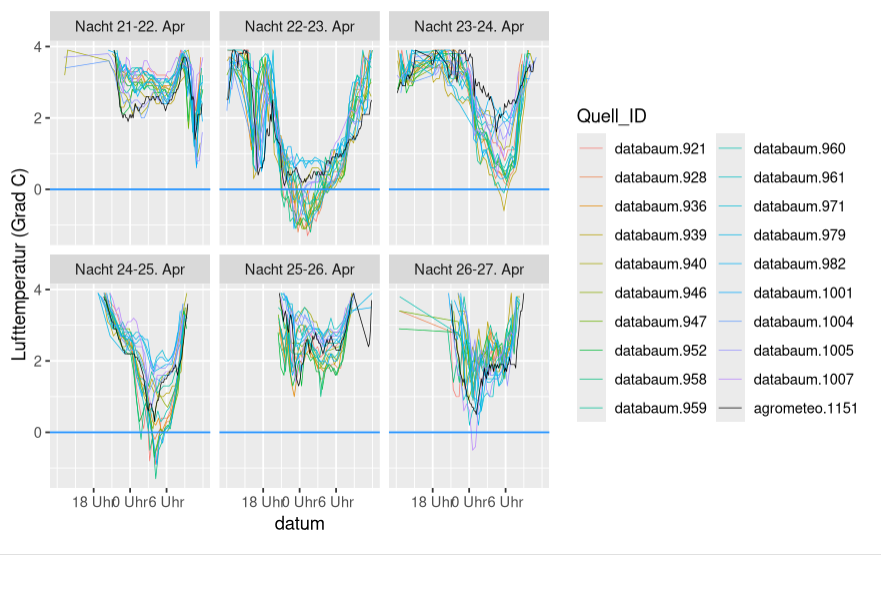Frost Alert

Frost occurs when a surface in humid air is cooled to freezing temperature (below O° C) and below dew point (Dietenberger, 1982). Frost when formed on plants cause freezing injury due to ice formation. Frost, damages the plant cells when the ice crystals are formed inside the plant tissue (FAO, 2005) Depending upon the crop types and the stage that is exposed to frost the frost injury varies.
The following table from FAO, 2005 shows the susceptibility of different fruits and vegetable crops.

The highest freezing temperature varies for different crops. The following table (FAO, 2005) has details of highest freezing temperature for some crops.

A timely alert on frost helps us to protect the crops from severe frost damage. So, a frost alert will be an useful tool to take farm decisions. In databaum website, we have an option for frost alert. The farmer can register for frost alert and keep watch. The steps to activate the frost alert for your farm are as follows:





For communicating through Telegram (Step 11), Kindly click on the telegram link of databaum: https://t.me/DataBaumBot. You will be directed to your Telegram app that displays send message. Click that and the display will show your chat ID. Kindly enter that chat ID in Step 12 to get alert on your Telegram app.
The following table helps you to provide the required minutes (Step 13) according to the respective hours of your interest.

Let us stay alert for frost and protect our crops.
Update 2023-04-11
As an intelligence company, we obviously had to ask an automated intelligence about the optimal temperatures too. So here is the list it gave us.
- Citrus fruits: -1°C to -2°C (30°F to 28°F)
- Grapes: -2°C to 0°C (28°F to 32°F)
- Berries: -1°C to -2°C (30°F to 28°F)
- Apples: -2°C to 0°C (28°F to 32°F)
- Stone fruits (peaches, plums, cherries): -1°C to -2°C (30°F to 28°F)
- Pears: -2°C to 0°C (28°F to 32°F)
- Almonds: -2°C to -3°C (28°F to 27°F)
- Walnuts: -1°C to -2°C (30°F to 28°F)
- Pistachios: -2°C to -3°C (28°F to 27°F)
- Avocados: -1°C to 0°C (30°F to 32°F)
- Lettuce: -2°C to 0°C (28°F to 32°F)
- Spinach: -2°C to 0°C (28°F to 32°F)
- Broccoli: -1°C to -2°C (30°F to 28°F)
- Cauliflower: -1°C to -2°C (30°F to 28°F)
- Cabbage: -2°C to -1°C (28°F to 30°F)
- Carrots: -2°C to -1°C (28°F to 30°F)
- Potatoes: -2°C to 0°C (28°F to 32°F)
- Onions: -2°C to -1°C (28°F to 30°F)
- Garlic: -2°C to -1°C (28°F to 30°F)
It's worth noting that these are general guidelines, and the optimal wet bulb temperature for frost alerting can vary depending on the specific crop variety and growing conditions. Additionally, other factors such as wind, cloud cover, and soil moisture can also impact a crop's tolerance to frost.
We wish you successful and healthy farming.
